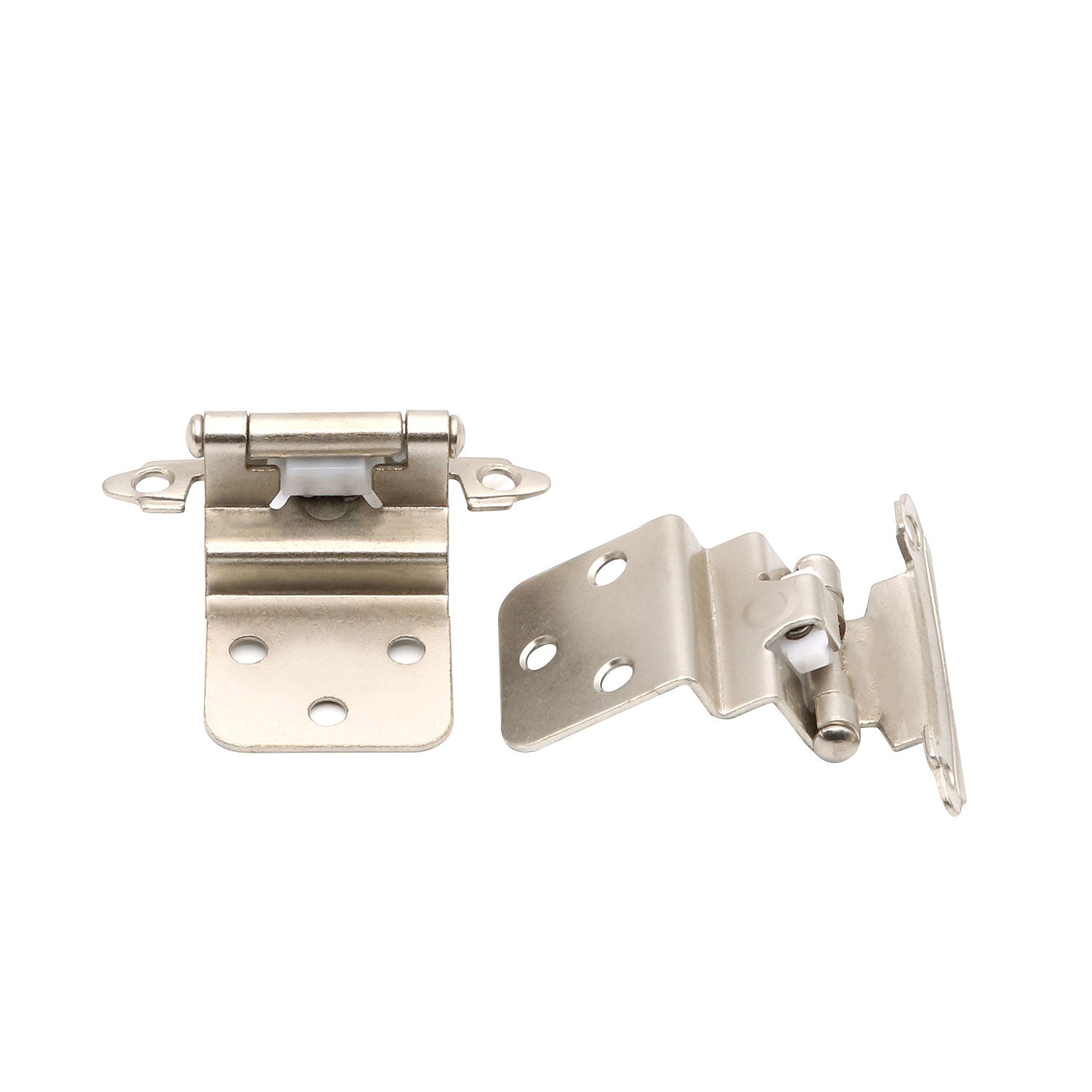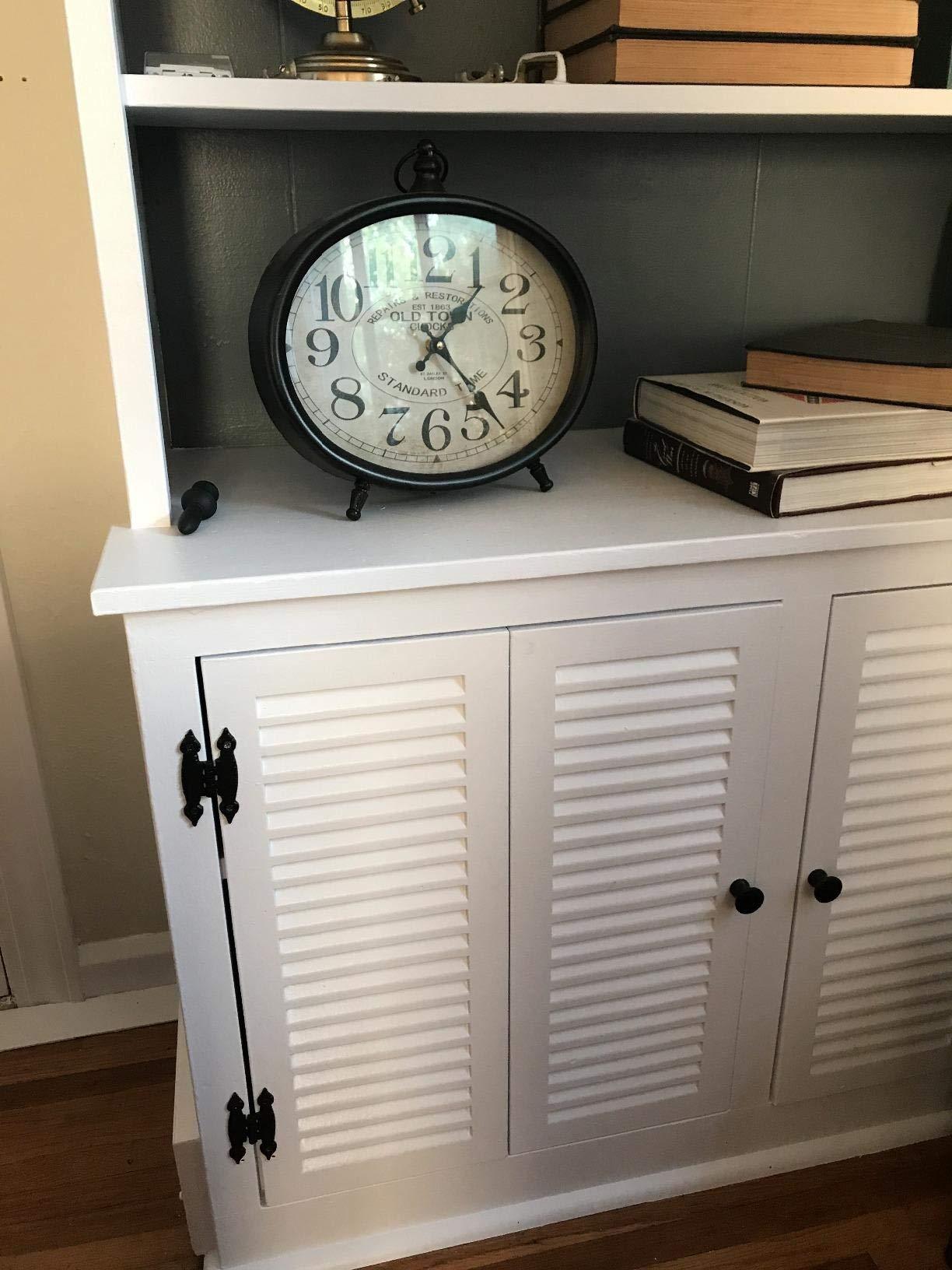If you’re looking to transform your cabinetry while adding a touch of style, decorative cabinet hinges might just be the perfect solution. These small yet impactful hardware pieces can turn a plain cabinet into a stunning focal point. Having personally renovated several spaces, I can say with confidence that the right hinges make all the difference. In this comprehensive guide, we’ll explore everything you need to know about decorative cabinet hinges, including types, styles, installation, maintenance, and more.
What Are Decorative Cabinet Hinges?
Decorative cabinet hinges are not just functional components; they are essential elements that add personality to your cabinetry. Available in various styles, materials, and finishes, these hinges can complement the overall design of your home, whether it’s contemporary, rustic, or traditional.
Why Choose Decorative Cabinet Hinges?
Choosing decorative cabinet hinges comes with several advantages:
- Enhanced Aesthetic Appeal: They can upgrade the look of your cabinets significantly.
- Variety of Styles: Available in numerous designs, they cater to various tastes and interior themes.
- Functional Performance: Support the weight and operation of cabinet doors effectively.
Types of Decorative Cabinet Hinges
Understanding the different types of decorative cabinet hinges is essential for making an informed choice.
1. Butt Hinges
Butt hinges are one of the most common types used in cabinetry. They are simple, functional, and can be found in various decorative finishes.
2. Continuous Hinges
Also known as piano hinges, continuous hinges run the entire length of the door. They provide extra support and are available in decorative designs for better aesthetics.
3. Concealed Hinges
Concealed hinges (or hidden hinges) offer a sleek look since they are not visible when the cabinet is closed. They come in decorative varieties to match the cabinet style.
4. Strap Hinges
These are often used in more rustic or traditional designs. Strap hinges are long and provide a unique visual appeal compelling for farmhouse-style decor.
5. Pivot Hinges
Ideal for heavier doors, pivot hinges allow for smooth operation. They can also be found in decorative options that enhance the overall look of the cabinetry.
Popular Materials for Decorative Cabinet Hinges
The material of your decorative cabinet hinge affects both durability and style. Some popular materials include:
- Brass: Offers a warm tone and can be polished for a shiny finish.
- Stainless Steel: Known for durability and resistance to rust and corrosion.
- Bronze: Provides a vintage feel and develops a unique patina over time.
- Plastic: Lightweight and budget-friendly, suitable for less demanding applications.
Decorative Cabinet Hinges: Styles and Finishes
Decorative cabinet hinges come in an array of styles and finishes, allowing you to match them perfectly with your cabinetry. Here are some popular options:
1. Traditional
These hinges often have intricate designs and finishes, such as oil-rubbed bronze or brushed nickel.
2. Modern
Simple, sleek designs with minimal embellishments best define modern hinges. Matte finishes are popular in contemporary settings.
3. Rustic
Often made of wrought iron or featuring distressed finishes, rustic hinges bring a charming country feel to your cabinetry.
How to Choose the Right Decorative Cabinet Hinge
Selecting the right decorative cabinet hinge involves considering several factors:
1. Style Matching
Ensure the hinge style aligns with the overall design of your space. For instance, if your cabinets are modern, opt for minimalist hinges.
2. Weight Capacity
Consider the weight of your cabinet doors. Heavier doors will require stronger hinges like continuous or pivot hinges.

3. Finish
The finish of your hinges should complement the cabinet door and other hardware in the room. For example, if you have brushed nickel cabinet pulls, go for hinges in a similar finish.
Installation Guide for Decorative Cabinet Hinges
Installing decorative cabinet hinges may seem intimidating, but it’s a straightforward process with the right tools. Here’s a step-by-step guide:

Tools Needed
- Drill
- Screwdriver
- Hinge template (optional)
- Tape measure
- Pencil
Step 1: Measure and Mark
Using your tape measure, determine where the hinges will be placed on the cabinet doors. Mark these points with a pencil.

Step 2: Drill Holes
Carefully drill holes at the marked points, ensuring they are straight and aligned.
Step 3: Attach Hinges
Align the hinges with the drilled holes and secure them using screws. Make sure they are tightly fastened for optimal durability.

Step 4: Test the Door
Once the hinges are attached, test the door’s functionality to ensure it opens and closes smoothly.
Maintenance Tips for Decorative Cabinet Hinges
Keeping your decorative cabinet hinges in top condition will prolong their life and maintain their appearance. Here are some tips:

1. Regular Cleaning
Dust and clean the hinges regularly to prevent buildup that can cause them to malfunction.
2. Lubrication
Apply a silicone lubricant to the hinges periodically to ensure smooth operation.

3. Inspect for Damage
Regularly check for signs of wear and tear. Replace any damaged hinges promptly to avoid further issues.
Pros and Cons of Decorative Cabinet Hinges
| Pros | Cons |
|---|---|
| Enhances the aesthetic appeal of cabinetry | Can be more expensive than standard hinges |
| Available in a wide variety of styles and finishes | May require specific installation skills |
| Adds a touch of personalization to your space | Can be less durable if not made from quality materials |
Frequently Asked Questions (FAQs)
1. What is the best material for decorative cabinet hinges?
The best material depends on your needs and style preferences. Brass and bronze offer a timeless look, while stainless steel provides durability.
2. Can I install decorative cabinet hinges myself?
Yes, with the right tools and a bit of patience, you can install decorative cabinet hinges yourself following a guide.
3. How do I clean decorative cabinet hinges?
Use a soft cloth and mild detergent to clean hinges regularly. Avoid harsh chemicals that might damage the finish.
4. Are decorative cabinet hinges worth the investment?
Absolutely! They can significantly enhance the visual appeal of your cabinetry and add value to your home.
5. What is the difference between concealed and visible hinges?
Concealed hinges are hidden when the cabinet doors are closed, providing a sleek look, while visible hinges are part of the aesthetic and are exposed.
Conclusion
Decorative cabinet hinges are a fantastic way to elevate the design of your cabinetry while maintaining functionality. By understanding the various types, materials, and styles available, you can make informed decisions that reflect your personal taste. Whether you’re renovating your kitchen, bathroom, or any custom cabinetry, investing in high-quality decorative hinges will not only improve the aesthetics but also enhance the overall value of your home. Happy decorating!